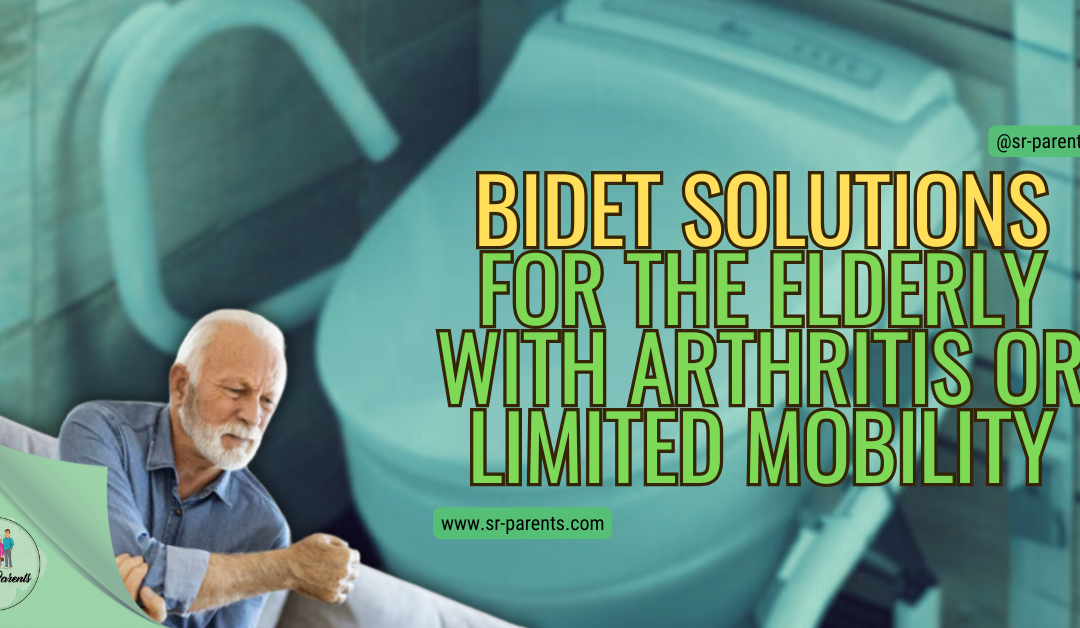Elderly with arthritis or limited mobility often face daily challenges that many of us take for granted, and I’ve seen this firsthand with people I care about. Watching them struggle with basic tasks like personal hygiene can be heart-wrenching, as these simple actions become increasingly difficult. As caregivers, it’s crucial for us to understand the specific and special needs of seniors, especially those with arthritis. Their physical limitations require us to find solutions that maintain their dignity and independence.
Here our write-up highlights how bidets can provide a simple yet effective solution to enhance comfort and ease in personal care, giving those we care for the autonomy they deserve. Let’s take a closer look at how these devices can make a significant difference.
Contents
Bidet Benefits for Elderly with Arthritis or Limited Mobility: A Caregiver’s Guide
Arthritis and limited mobility can impact the daily lives of elderly individuals, affecting their independence and quality of life. The simple act of personal cleansing, which many take for granted, can pose a significant challenge for those with such conditions.
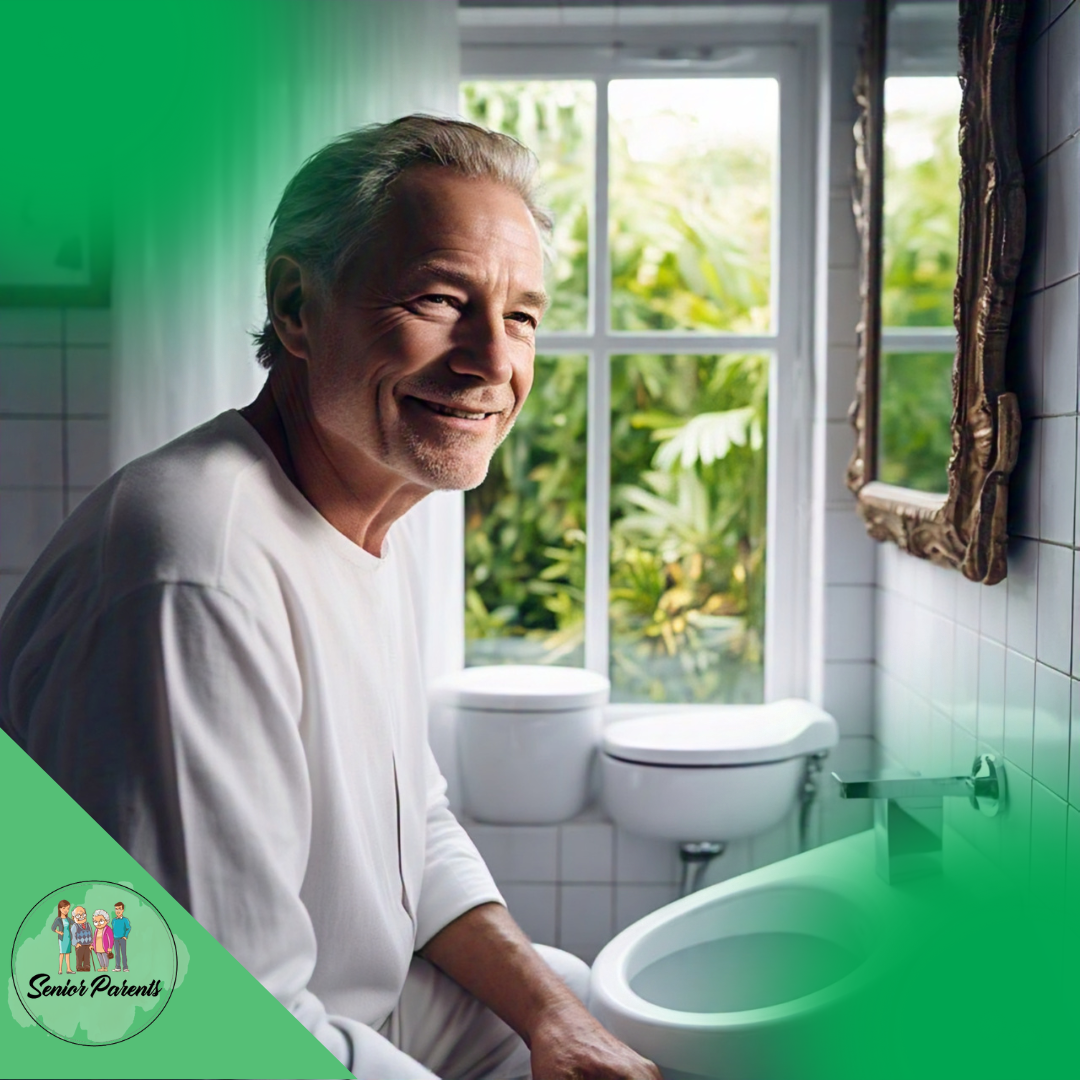
Introducing the use of a bidet can offer a gentle, hygienic, and manageable solution for those facing these difficulties. With a range of models, from standalone units to attachments that fit onto existing toilets, there is an option to suit varying needs and preferences.
Educating elderly individuals about the use of bidets involves demonstrating how these devices can enhance personal hygiene with ease and comfort. It is also essential to discuss safety and accessibility features that cater specifically to those with arthritis or limited mobility.
By providing a comprehensive guide, caregivers can help reduce the physical strain associated with traditional bathroom routines and empower the elderly to maintain their dignity and autonomy.
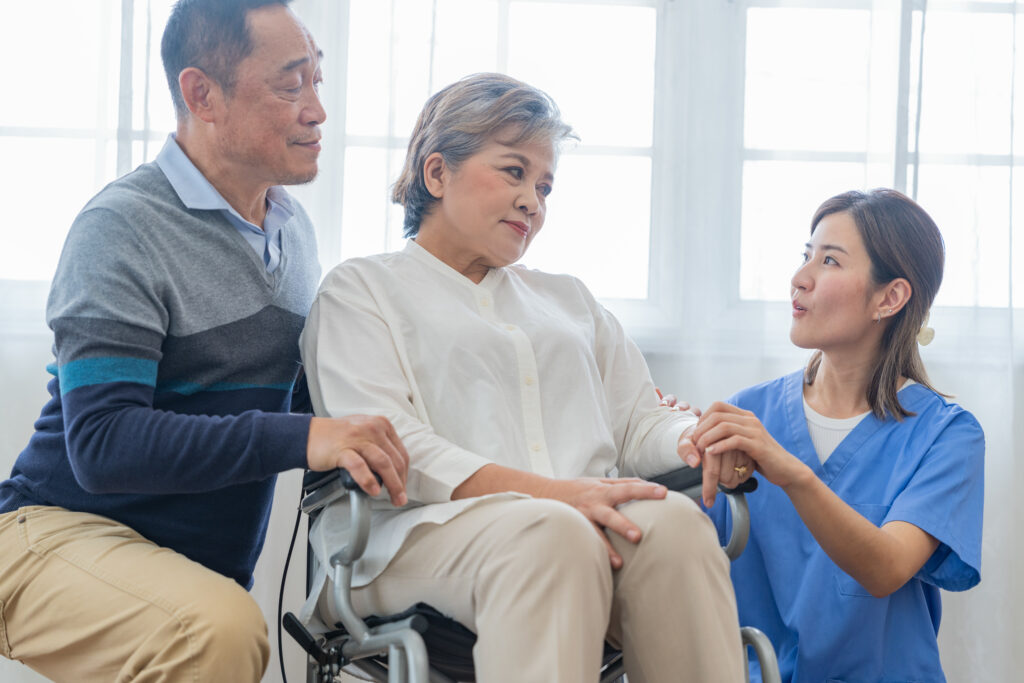
Key Takeaways
- Bidets provide a manageable hygiene solution for the elderly with arthritis or limited mobility.
- Safety and ease of use are key benefits of bidets for maintaining independence in personal care.
- A range of bidet models ensures that there is an option to accommodate individual needs and preferences.
Understanding Arthritis and Limited Mobility
Arthritis and limited mobility can transform simple daily activities into challenging tasks, requiring individuals to seek out alternative methods to maintain their independence and quality of life.
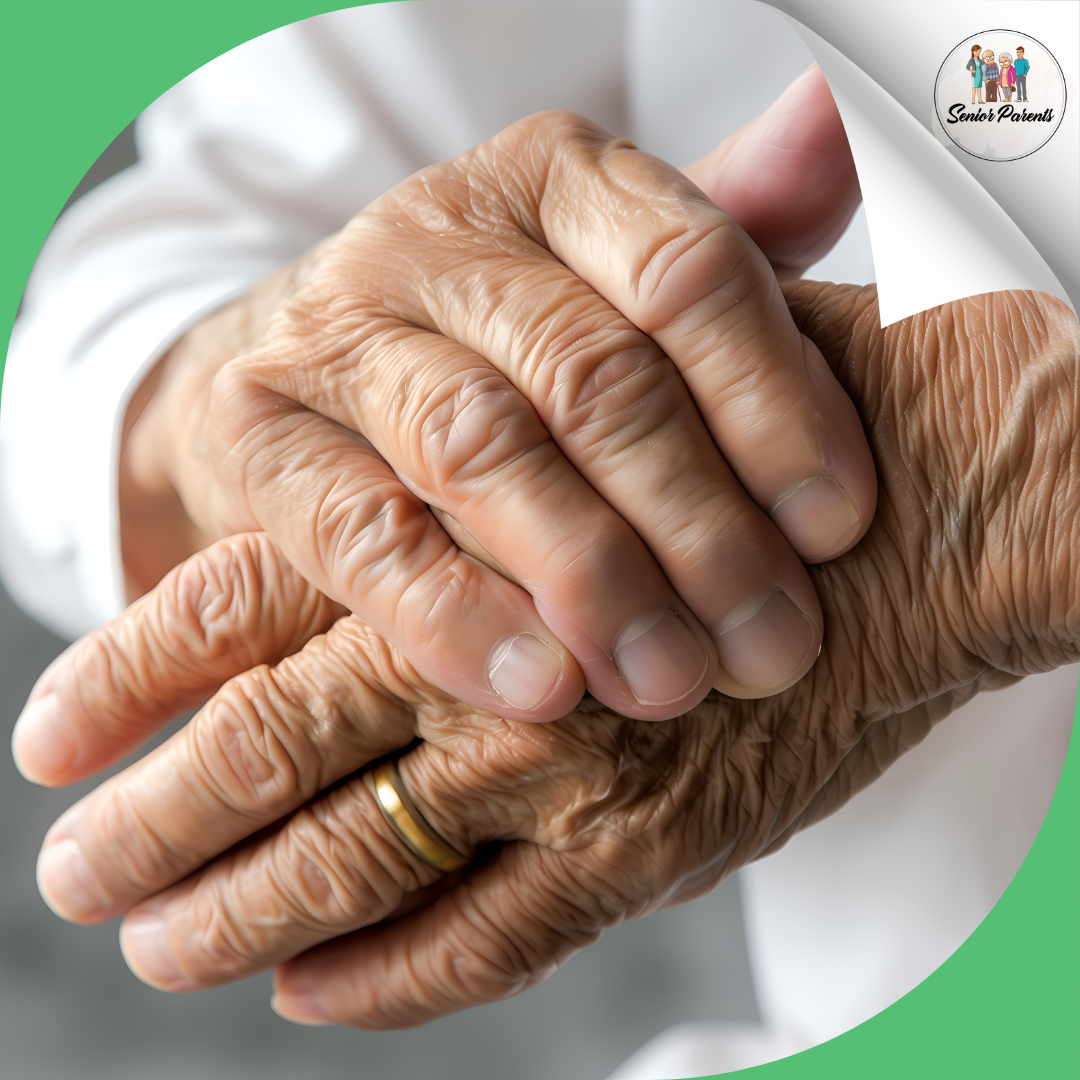
Effects of Arthritis on Daily Life
Arthritis, a condition characterized by inflammation of the joints, often leads to joint pain, stiffness, and swelling, which can significantly impede one’s ability to perform everyday tasks. The most commonly affected areas are the knees, hips, hands, and spine.
- Gripping objects: Difficulty in performing tasks that require fine motor skills, such as holding cutlery or turning keys.
- Standing and walking: Discomfort and pain can make it challenging to stand for long periods or move around smoothly.
- Personal hygiene: Actions like wiping, which necessitate dexterity and reach, become more difficult, potentially affecting one’s ability to maintain personal cleanliness.
Challenges Posed by Limited Mobility
Limited mobility, whether from arthritis or other conditions, can lead to a decrease in one’s activity level and pose various challenges, including:
- An increased risk of falls and related injuries due to balance issues or muscle weakness.
- A dependence on assistive devices such as walkers, canes, or wheelchairs to aid in movement.
- Social withdrawal as individuals might find it harder to participate in activities they once enjoyed.
As individuals adjust to their abilities, they often benefit from assistive devices that cater to their new needs. A bidet, for instance, can provide a level of autonomy in personal hygiene, aligning with the goals of those experiencing arthritis and limited mobility.
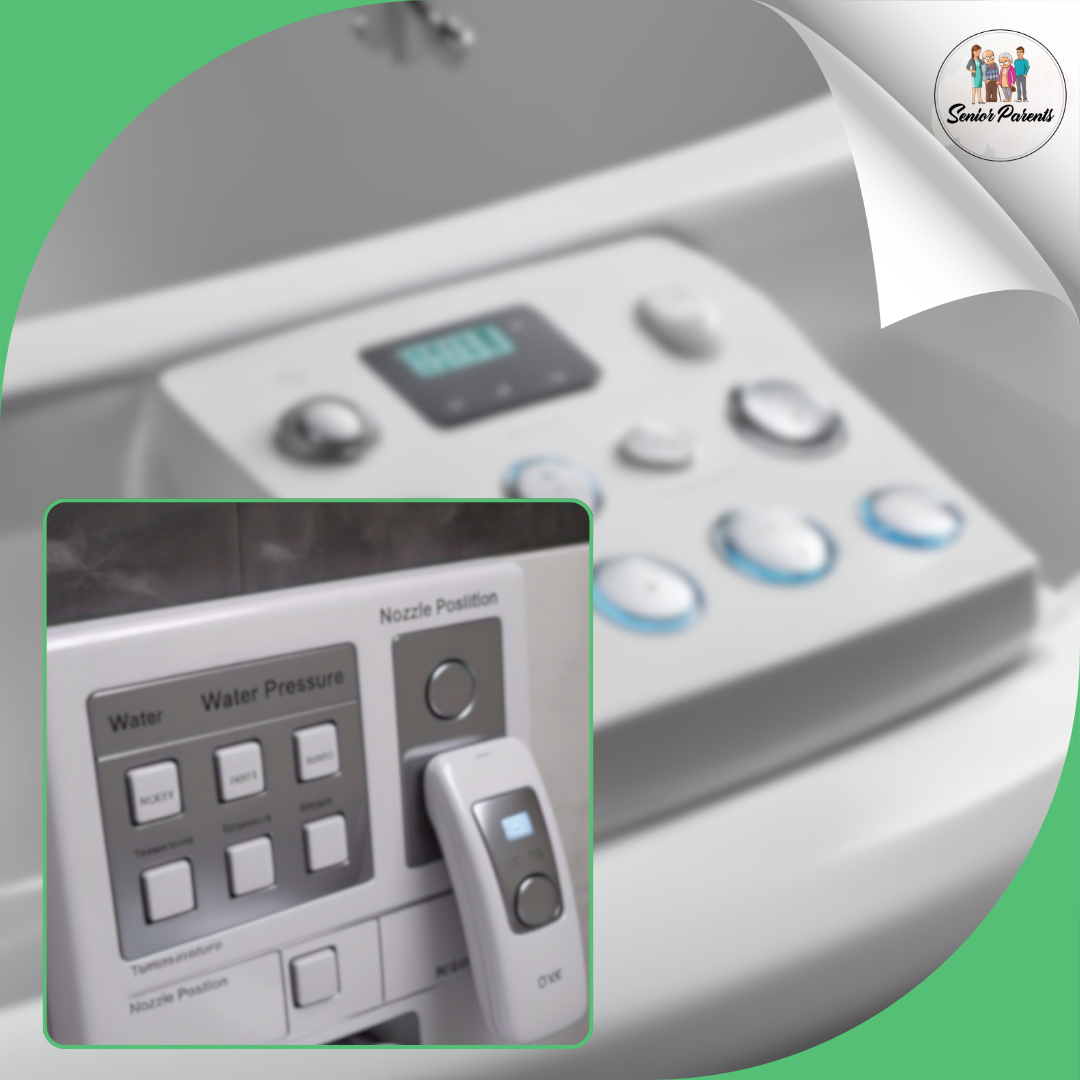
Exploring the Benefits of Bidets
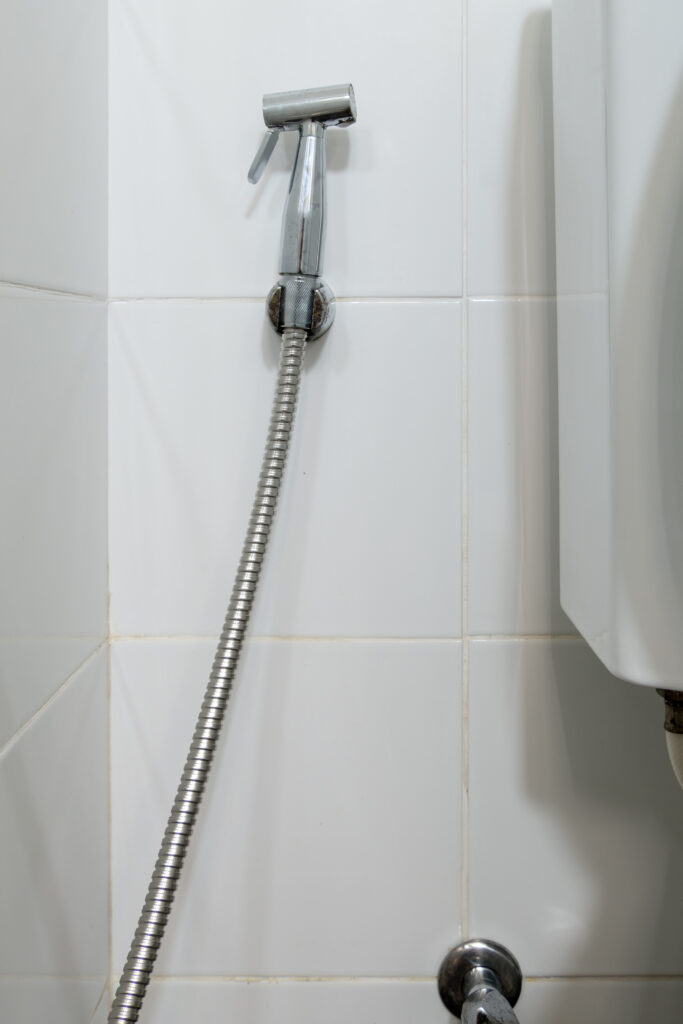
Bidets offer significant advantages for the elderly, particularly for those dealing with arthritis or limited mobility. These bathroom fixtures contribute to better personal hygiene and can provide a more comfortable and independent bathroom experience.
Hygiene Advantages for Arthritis Sufferers
For individuals with arthritis, maintaining personal cleanliness can be challenging. Bidets provide a hands-free solution that can be especially helpful.
For instance, for those with joint pain in their hands, bidets can reduce the need for manual wiping, which can sometimes be painful and ineffective. The gentle stream of water ensures a thorough clean without the need for awkward reaching or rubbing that can exacerbate arthritis symptoms.
Ease of Use for Individuals with Limited Mobility
Bidets are also valuable for people with limited mobility. They offer a level of independence in personal care that may otherwise be lost.
With features such as adjustable water pressure, temperature control, and even air drying, a bidet can minimize the physical exertion required for toileting. This is crucial for people with mobility issues who may find traditional methods of cleaning cumbersome or impossible.
Bidets and Skin Health
In addition to hygiene and ease of use, bidets are advantageous for skin health. They prevent irritation that can be caused by dry, rough toilet paper, especially important for the delicate skin of seniors.
By using water for cleansing, bidets mitigate the risk of skin breakdown, infections, and discomfort, keeping the skin in the perineal area healthy and soothed.
Types of Bidets Suitable for Elderly Users
For elderly individuals with arthritis or limited mobility, choosing the right type of bidet is crucial for maintaining independence and hygiene. The following are well-suited options that cater to different needs and bathroom setups.

Stand-Alone Bidets
Stand-alone bidets are separate fixtures that are typically installed next to the toilet. Their main advantage is the ease of access, which can be particularly beneficial for seniors who have trouble with sitting down or standing up. However, they require more space and can be an expensive addition in terms of both unit cost and installation.
Toilet Seat Attachments
Toilet seat attachments are a popular choice due to their convenience and minimal changes required in the bathroom. A prominent option is the Toto C100, which offers warm water, a heated seat, and an air dryer, reducing the need for physical reaching and wiping that can be challenging for users with limited mobility.
These attachments often come with easy-to-use controls that can be manipulated without significant hand strength.
Handheld Bidet Sprayers
For a more budget-friendly and flexible option, handheld bidet sprayers are a suitable choice. They are manageable attachments that connect to the toilet’s water supply and offer a precise cleaning experience.
While this type requires manual dexterity to operate, it allows users to control the strength and direction of the spray, giving them autonomy over their cleansing process.
How Bidets Promote Independence

Bidets play a crucial role in fostering autonomy for the elderly with arthritis or limited mobility by eliminating the need for caregiver assistance during toileting routines and empowering them to manage their personal hygiene with confidence.
Reducing the Need for Physical Assistance
Bidets are equipped with features that enable individuals with limited dexterity to maintain cleanliness without external help. For example, they often come with adjustable water pressure and temperature controls, which can be operated via simple buttons or a remote control.
This means that the elderly can use the toilet independently, reducing the requirement for a caregiver’s physical aid.
Empowering Self-care
Utilizing a bidet provides the elderly with a tool to take charge of their personal hygiene. The process is straightforward: a gentle spray of water cleanses effectively, without the need for difficult reaching or wiping movements.
This is particularly beneficial for those with painful conditions such as arthritis, as it diminishes the physical strain and promotes a sense of self-reliance in personal care routines.
Safety and Accessibility Features of Bidets
For elderly individuals with arthritis or limited mobility, bidets offer various safety and accessibility features that can make personal hygiene easier and more comfortable. These features are designed to cater to their specific needs and can significantly enhance the bathroom experience.
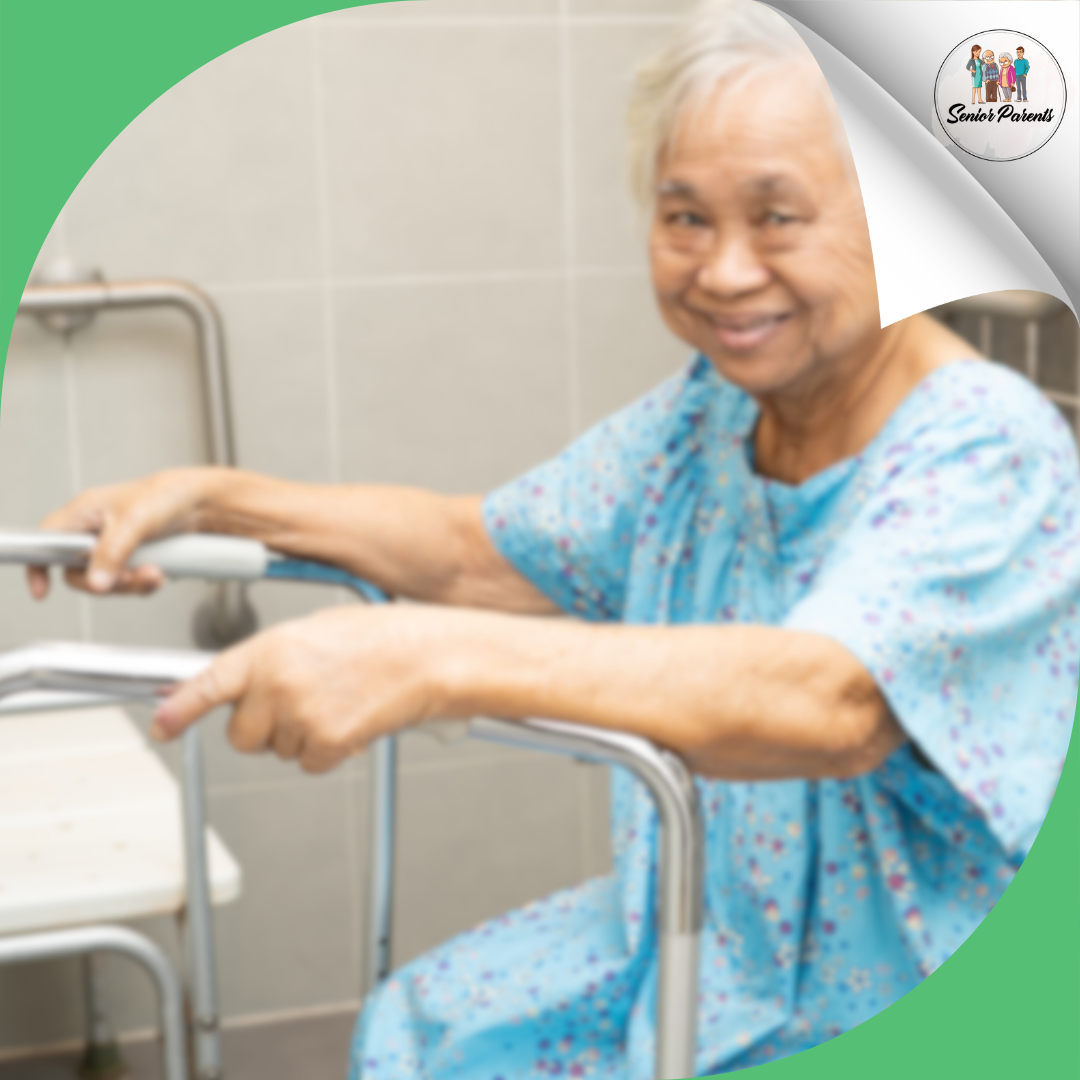
Adjustable Pressure Controls
Bidets are equipped with adjustable pressure controls, allowing users to find a comfortable water pressure that suits their sensitivity and needs. This feature is particularly beneficial for seniors as it prevents discomfort and ensures a gentle, thorough cleaning without the need for manual wiping.
Temperature Settings
Many bidet models come with temperature settings, providing the option to regulate the warmth of the water. This can be crucial for older adults who may be sensitive to cold temperatures or who may find warm water soothing for muscle stiffness or joint pain associated with arthritis.
Nozzle Positioning
The positioning of the bidet’s nozzle is adjustable on many units, which means it can be aligned to their body without having to twist or turn, thereby reducing strain on joints and muscles.
Correct nozzle positioning ensures an effective clean and enhances the overall comfort of the user.
Step-by-Step Guide to Using a Bidet
For individuals with arthritis or limited mobility, the use of a bidet can provide a comfortable and hygienic bathroom experience. This guide offers a straightforward, step-by-step approach to using a bidet effectively.
Preparing to Use the Bidet
- Locate the Controls: Familiarize oneself with the bidet’s features and controls. They are usually positioned on the side of the bidet or on a nearby wall.
- Adjust Positioning: Safely transfer to the bidet after using the toilet. Care should be taken to position oneself over the jets to ensure targeted cleansing.
Operating the Bidet
- Start Gently: Begin with a low-pressure setting to avoid discomfort, gradually increasing as needed for effective cleaning.
- Use Warm Water if Available: If the bidet has temperature control, adjusting the water to a warm setting can enhance comfort, especially for sensitive skin.
Concluding the Use of Bidet
- Dry Off: After rinsing, one can dry off using either bidet-provided air-dry features or a dedicated bidet towel.
- Return to the Toilet: Care should be taken when moving back to the toilet or standing up to ensure safety and stability.
Incorporating Bidets into Daily Routines
Integrating a bidet into one’s daily hygiene can offer compelling benefits, especially for seniors with limited mobility or arthritis. It is a method that combines comfort with cleanliness.
Scheduling Regular Use
To reap the full benefits of bidets, it is essential for individuals to integrate their usage into their daily bathroom routine. Encouraging consistency is key; setting specific times for bidet use can help in establishing a habit.
- Morning Routine: Use the bidet after the first bathroom visit of the day.
- Evening Routine: Make bidet use a part of the nightly bathroom routine, ensuring cleanliness before sleep.
Hygiene Maintenance
Maintaining hygiene is crucial for preventing infections and ensuring skin health, particularly among the elderly. Bidets aid in gentle cleaning, which is vital for seniors with sensitive skin or those prone to urinary tract infections.
Best Bidets for the Elderly outlines the comfort and hygiene advantages bidets offer compared to traditional toilet paper.
- Adjustable Settings: Utilize features like adjustable water pressure and temperature for a personalized, gentle cleansing experience.
- Accessibility: Ensure that the bidet controls are easily reachable and simple to operate, accommodating the specific mobility needs of each individual.
Educational Resources for Elderly and Caregivers
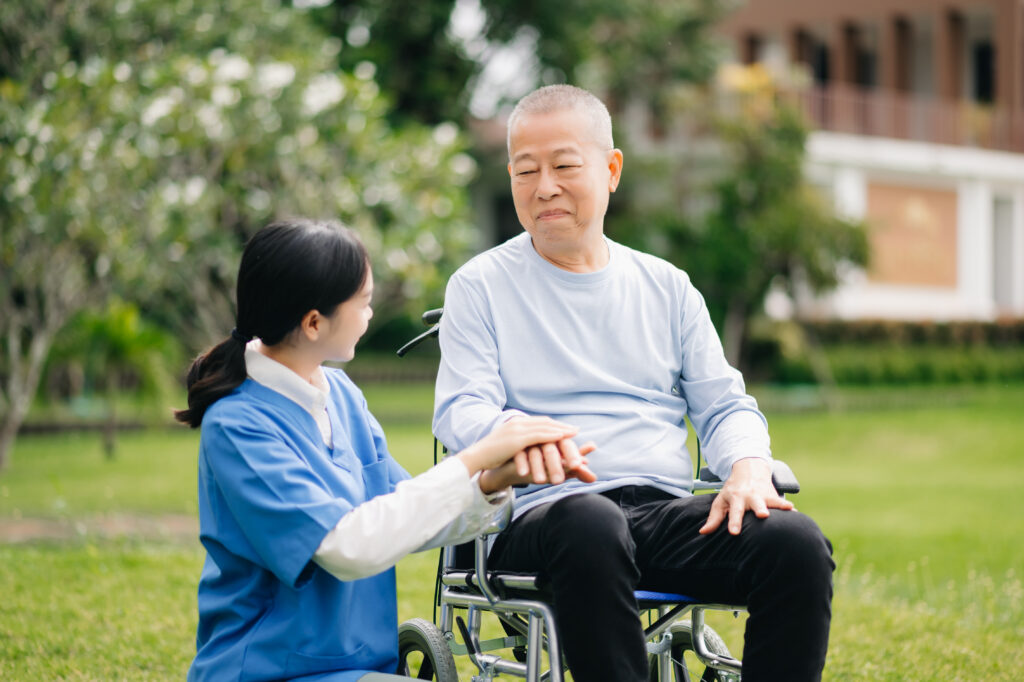
Introducing and educating the elderly about the use of bidets, particularly for those with arthritis or limited mobility, can significantly improve their quality of life. Access to the right educational resources can empower caregivers and the elderly to make informed decisions about incorporating this technology into daily routines.
Instructional Videos and Manuals
Instructional videos and manuals provide a visual and textual guide on how bidets work and how they can be used effectively.
Videos often demonstrate the step-by-step process, making it easier for the elderly to understand and follow. Meanwhile, manufacturers typically provide manuals that are designed to be simple to read and often include illustrations, so users and caregivers can refer to them as needed.
Workshops and Demonstration Sessions
Workshops and demonstration sessions conducted by local community centers or health organizations are an excellent resource.
These in-person sessions allow for real-time feedback and the chance to have questions answered by professionals.
During a demonstration, the elderly and caregivers can see firsthand how to operate a bidet. This can alleviate any apprehension and encourage its adoption.
Online Communities and Support Groups
Online communities and support groups offer a platform for the elderly and caregivers to share experiences and tips about using bidets.
The wealth of shared knowledge in these support groups can be reassuring. They provide social proof of the benefits and ease of use.
Many online platforms facilitate discussion, which can be particularly valuable for caregivers looking for advice tailored to specific mobility issues.
Purchasing and Installing a Bidet
When introducing a bidet to elderly individuals or those with limited mobility, it is essential to choose a model that is accessible and meets specific needs, and ensure proper installation for safety and usability.
Selecting the Right Bidet Model
For individuals with arthritis or limited mobility, selecting a bidet that is easy to use is crucial.
They should look for a bidet with a wide seat, adjustable water pressure, and simple knob-style controls.
Some models suitable for seniors also offer heated seats and air dryers to enhance comfort and ease of use.
Understanding Installation Requirements
Installing a bidet can vary from simple to complex depending on the type of bidet.
For a standard attachable bidet, you will need to have a flexible water supply line and a nearby electrical outlet if the model includes features like warm water or an air dryer.
Details on bidet installation, including the need for shutoff valves and a 1-1/4″ drain stub-out, can be found in comprehensive installation guides.
Professional Installation Services
Due to the potential complexity of bidet installation, it’s advisable to hire a professional.
Professionals can handle the entire process, from selecting the correct fittings to ensuring a leak-free installation.
Users can find services that specialize in bidet installation for the elderly, which can also include additional adjustments to make the bidet as user-friendly as possible.
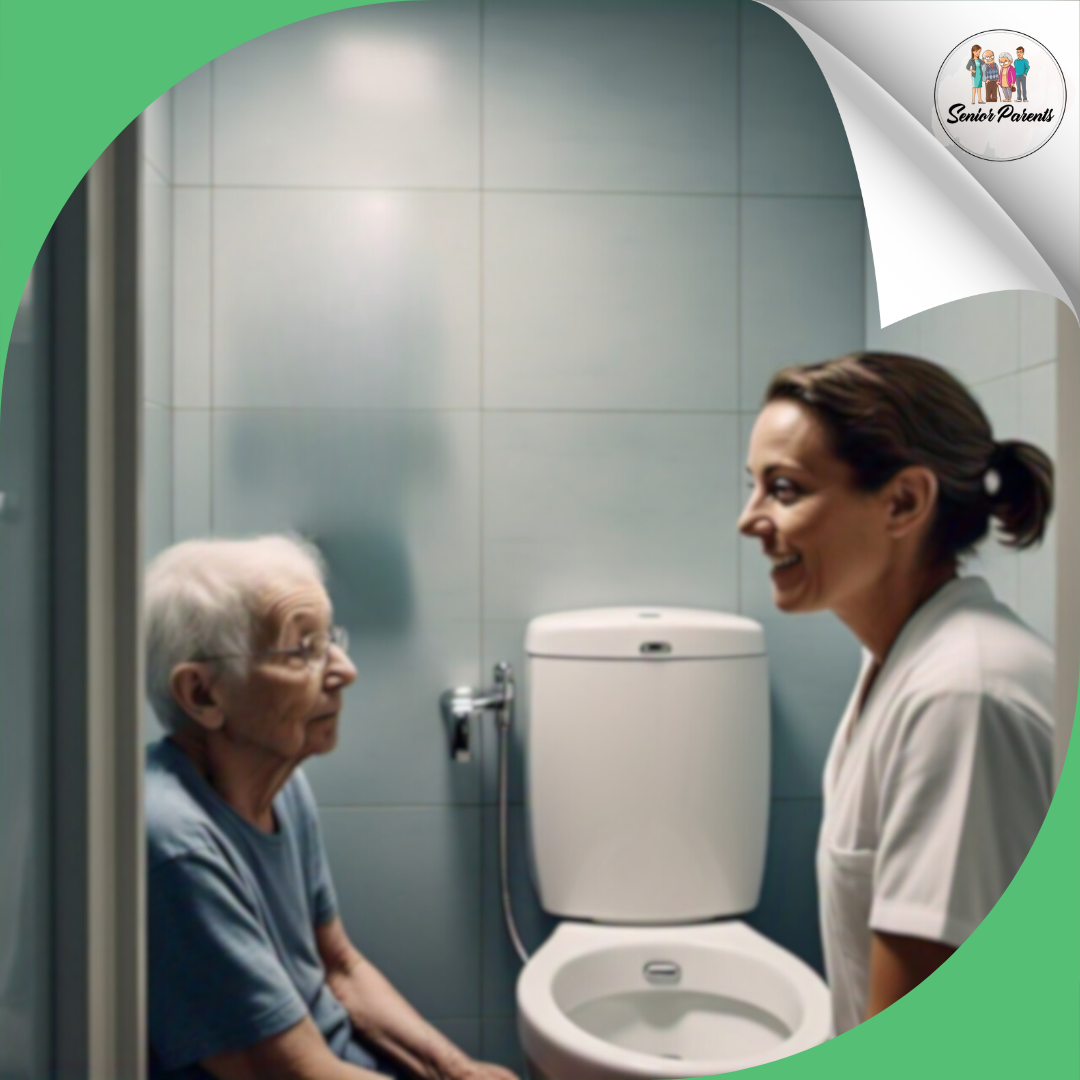
Elderly with Arthritis or Limited Mobility: Final Say
As we wrap up, it’s clear that elderly individuals with arthritis or limited mobility face more challenges than many of us realize. Earlier here, we’ve explored how bidets can make a real difference by offering a simple, effective way to improve personal care. Whether it’s reducing strain from wiping or ensuring a more hygienic experience, bidets provide an opportunity for greater comfort and independence.
If you’re a caregiver, a senior yourself, or someone who’s just concerned about the well-being of a loved one, you might find what we talked about really relevant. It’s not always easy to find practical solutions, but simple changes like this can have a big impact. If anything you’ve read here raises a question or seems uncertain, don’t hesitate to reach out to a healthcare provider for personalized advice.
Take good care of yourself and those you care about, and remember, the right resources and support are always available to help improve quality of life. If you’re considering making any changes, now’s a great time to look into the options that could make a difference. Wishing you health and comfort on this journey.
Frequently Asked Questions
The following FAQs provide insights into how bidets can be a practical solution for elderly individuals with arthritis or limited mobility, ensuring their comfort and hygiene.
What are the advantages of using a bidet for people with arthritis or limited mobility?
Bidets offer a hands-free alternative for personal cleansing, reducing the need for difficult reaching and wiping that can be painful for those with joint pain or mobility constraints.
How do bidets enhance personal hygiene for seniors?
Seniors can achieve a more thorough clean using a bidet, which can be particularly beneficial for those with incontinence issues. It minimizes the risk of skin irritation and maintains better genital health.
Can bidets help in reducing the risk of infections for elderly users?
Yes, the gentle and effective cleaning provided by a bidet can help diminish the occurrence of urinary tract infections and other hygiene-related ailments in elderly individuals.
What features should be considered when choosing a bidet for someone with mobility issues?
Features to consider include adjustable water pressure, warm water options, and easily accessible controls. These enable those with mobility issues to use the bidet with ease and comfort.
How can a bidet improve bathroom independence for elderly individuals?
By simplifying the cleaning process, bidets can help seniors maintain their dignity and independence, reducing reliance on caregivers for intimate hygiene tasks.
What guidance do healthcare professionals provide regarding bidet use for the elderly?
Healthcare professionals often suggest bidets for seniors. This is because bidets have a non-irritating cleaning process. They are also easy to use, which can contribute to the overall well-being of elderly patients with mobility challenges.
Empower Your Health Journey!
If you found this article helpful, there’s more where that came from! Visit our official website for valuable insights on elderly care, fitness, and wellness. Join our Facebook community to connect with others who share your passion for improving health and well-being. Get inspired and supported every step of the way!

